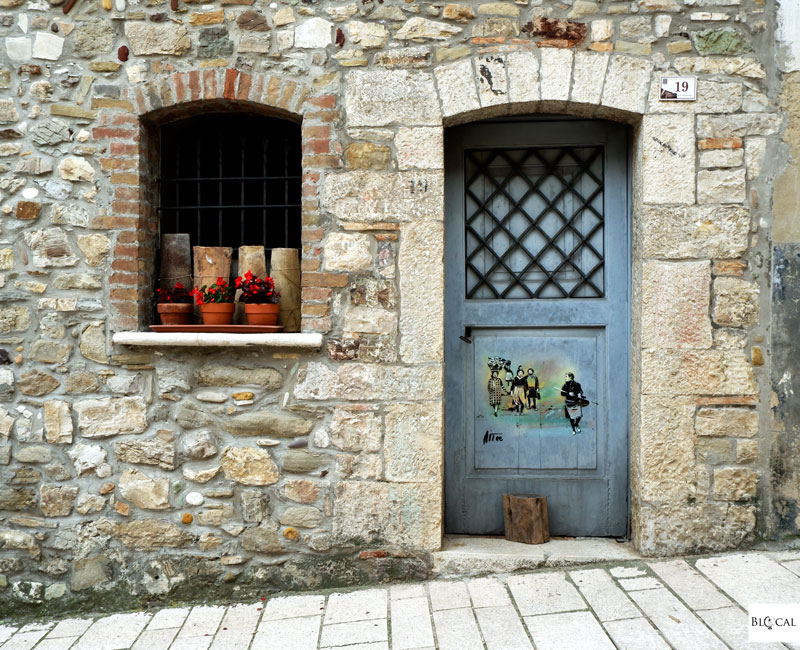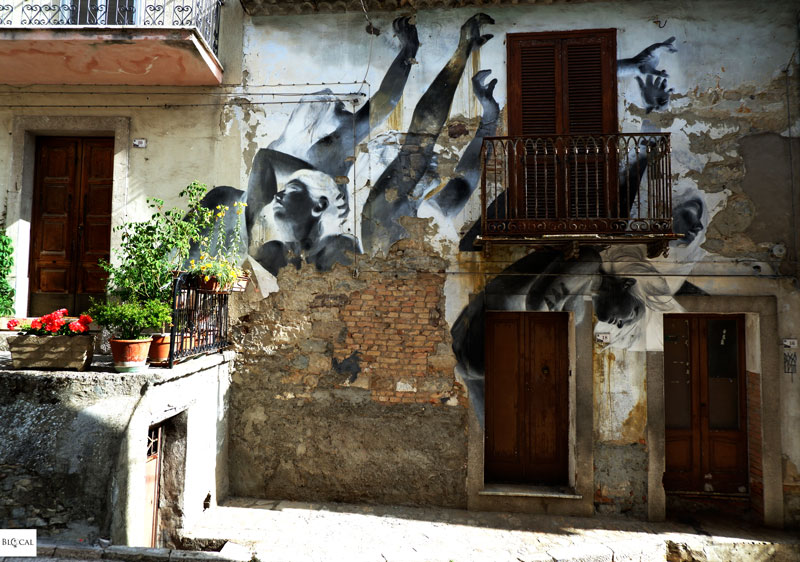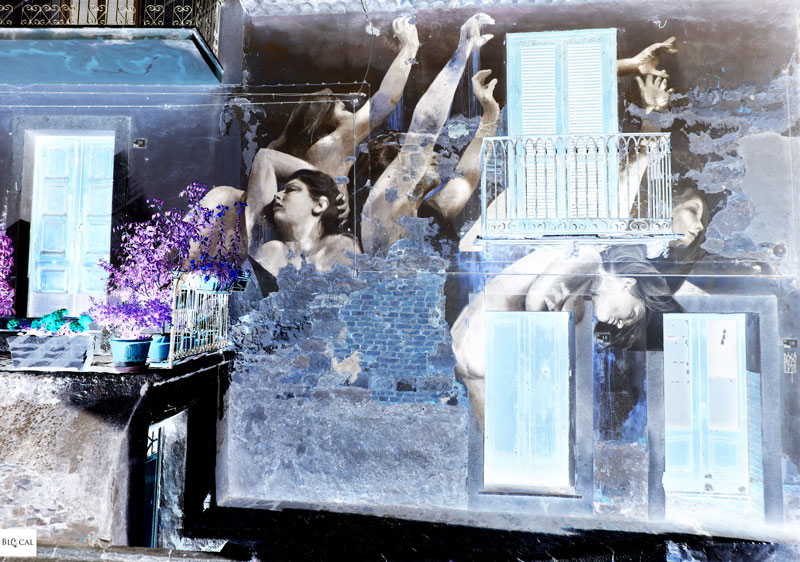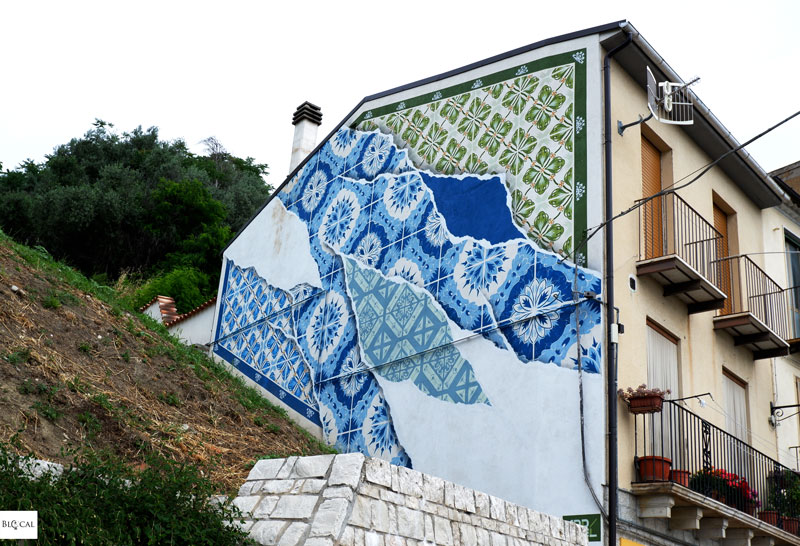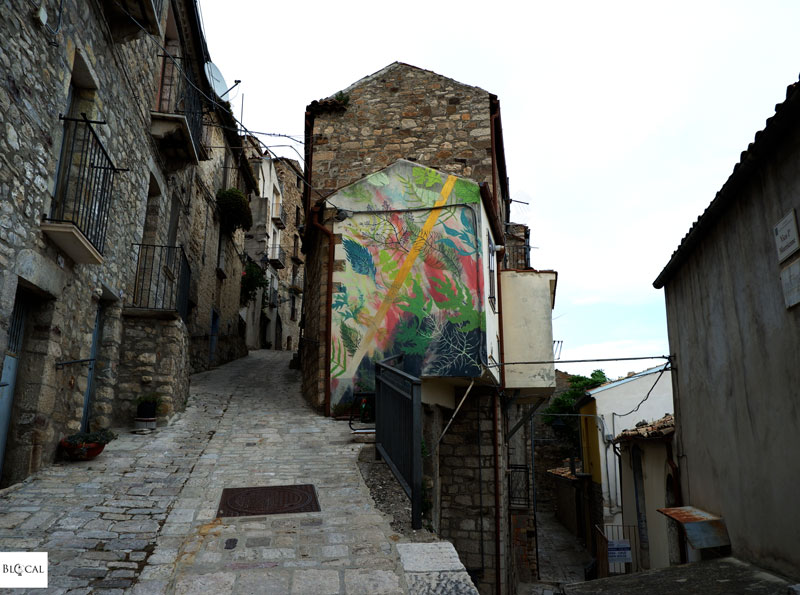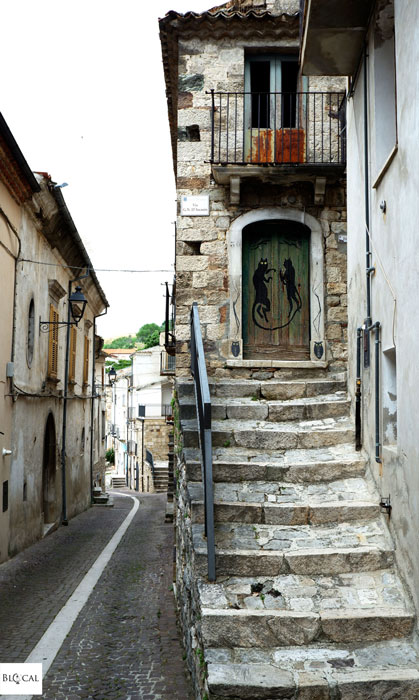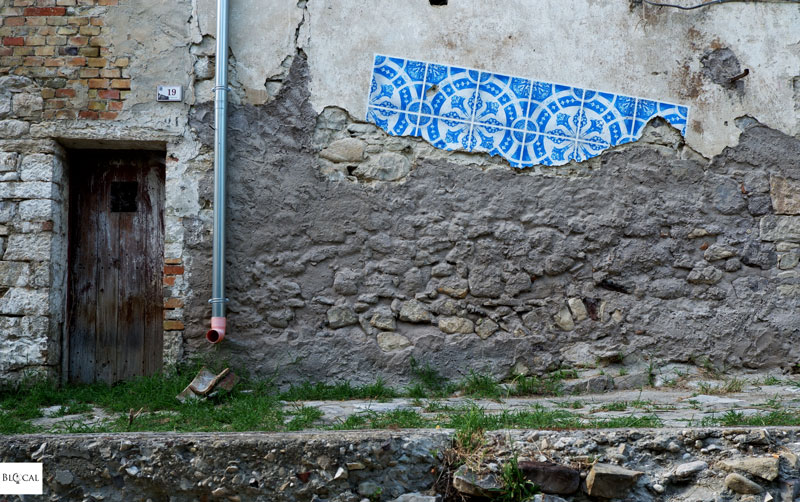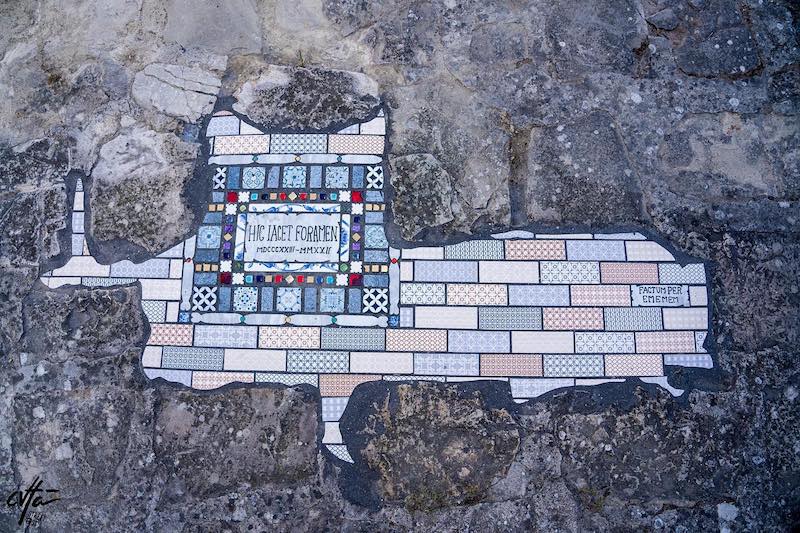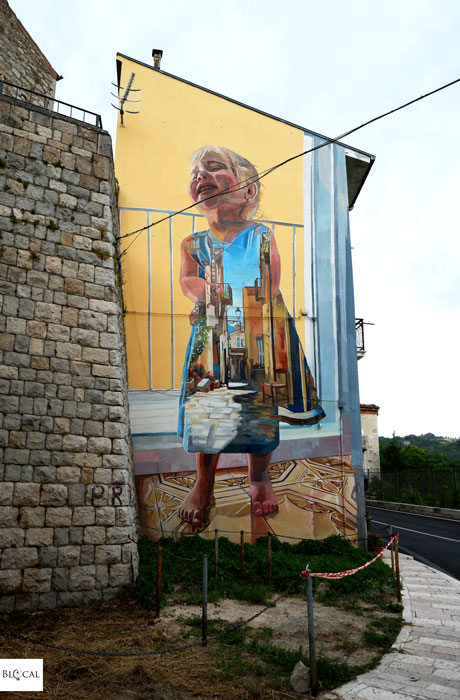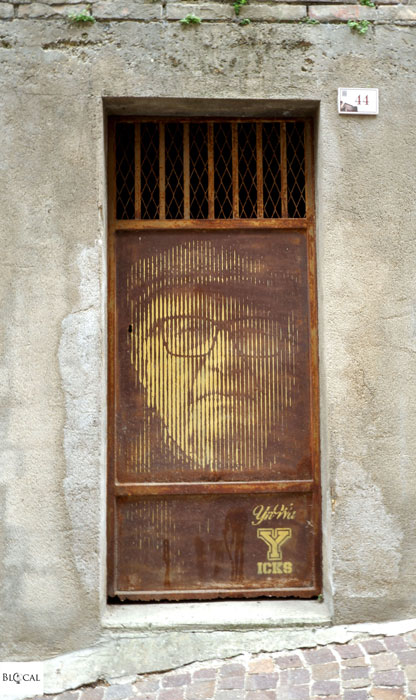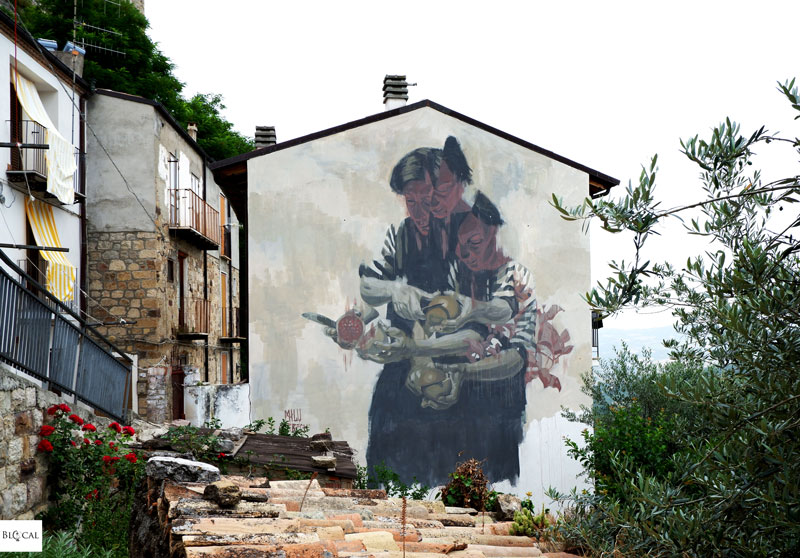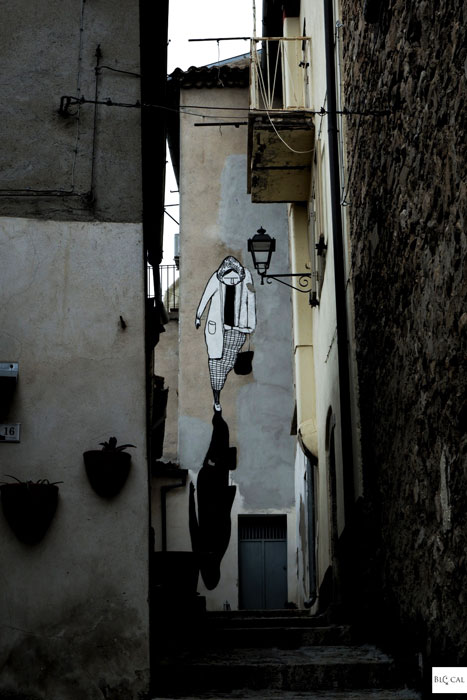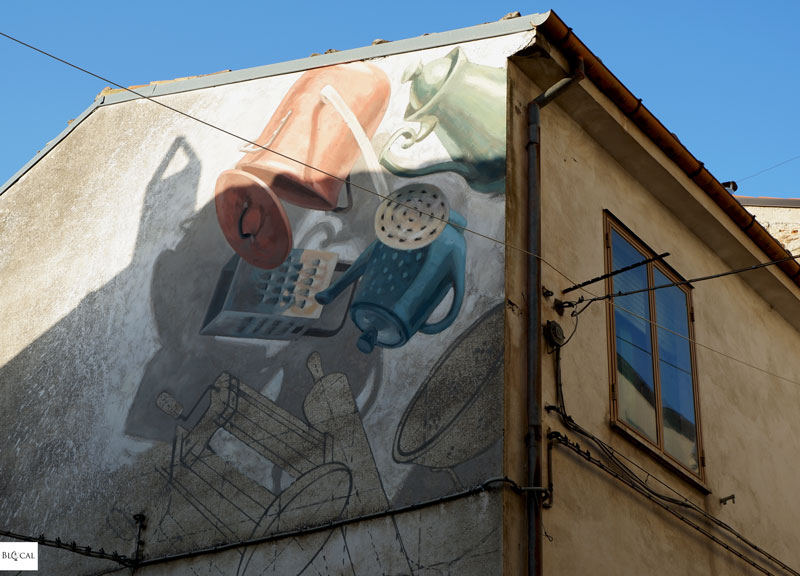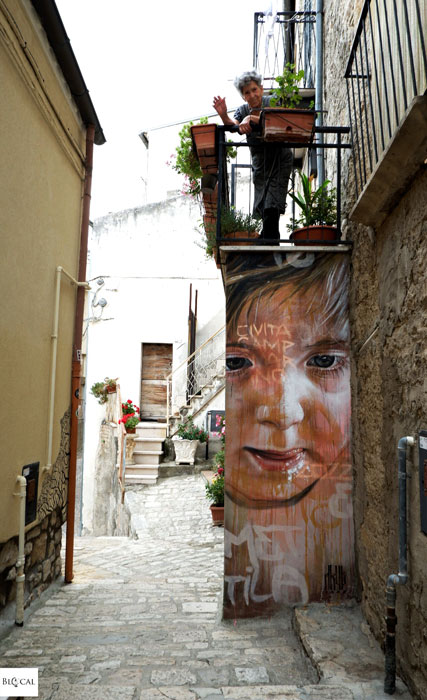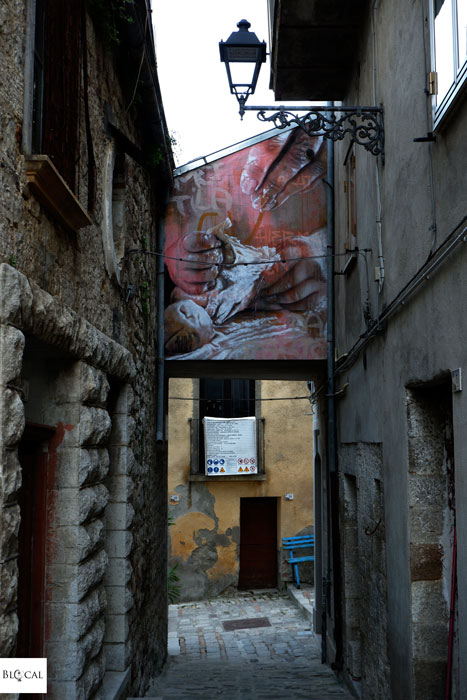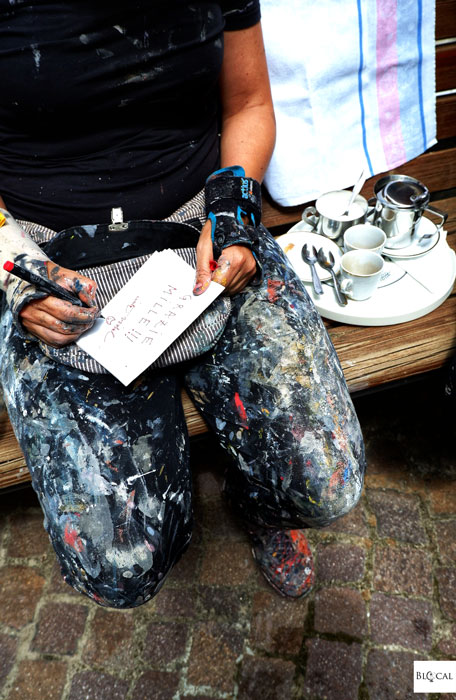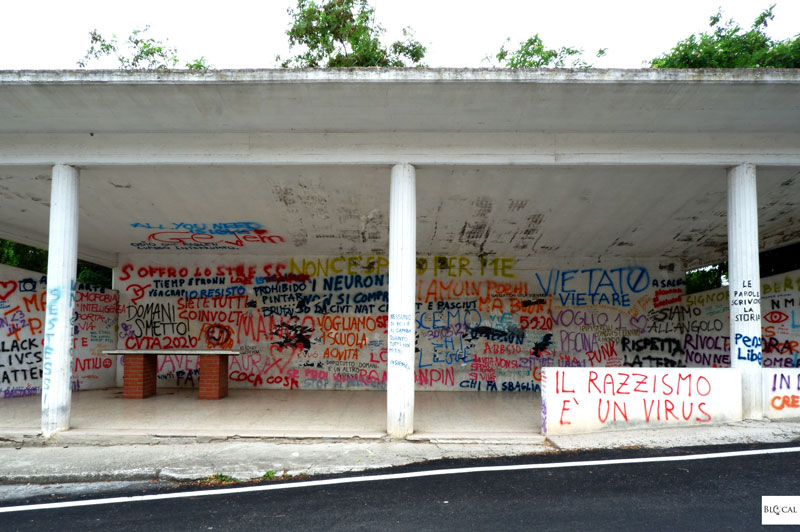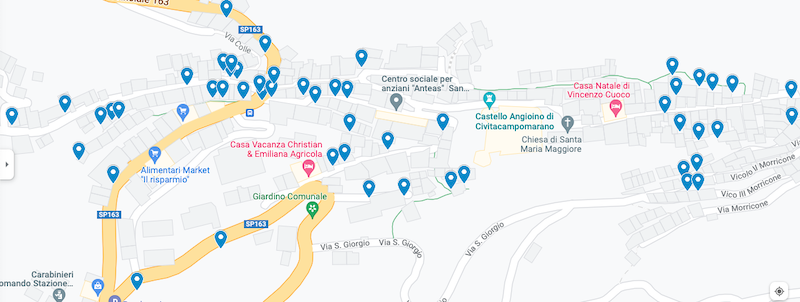Reporting from the streets of Civitacampomarano, a little village in southern Italy where Italian street artist Alice Pasquini has been curating an excellent street art festival since 2016.
As anticipated in my latest newsletter, this week I’m telling you more about my time in Civitacampomarano, a medieval village in Molise, the Italian region that “doesn’t exist.” The region of Molise has become the punchline of Italy’s national joke (“Molisn’t”, if you want) given its small size and underrated landscapes. Nevertheless, it has become prominent lately thanks to several high-quality street art projects that have put Italy’s last great unknown on people’s radar.
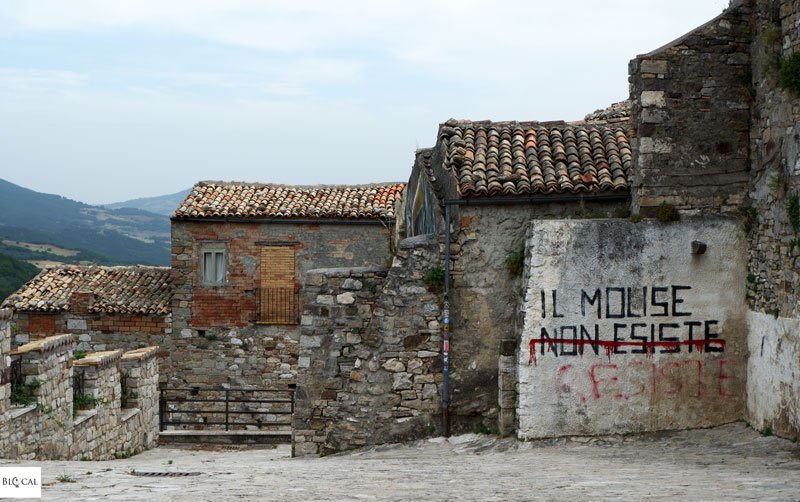
CVTA’ Street Fest: the story of Alice Pasquini’s street art festival in Molise.
In 2014, Alice Pasquini received a painting invitation that definitely stood out, as Civitacampomarano is also the village of origin of her mother. However, when Alice arrived there to paint, she discovered that the town was no longer the place of her childhood summers. Youngsters and families had moved away, leaving many houses abandoned in the old part of the village.
Depopulation is a severe threat in Southern Italy. Today, only 300 people live in Civitacampomarano, most of whom are old, meaning they won’t be around for long. Youngsters are so few that the local school shut down 20 years ago -a sorrowful issue that inspired the installation of the Iranian brothers Icy & Sot.
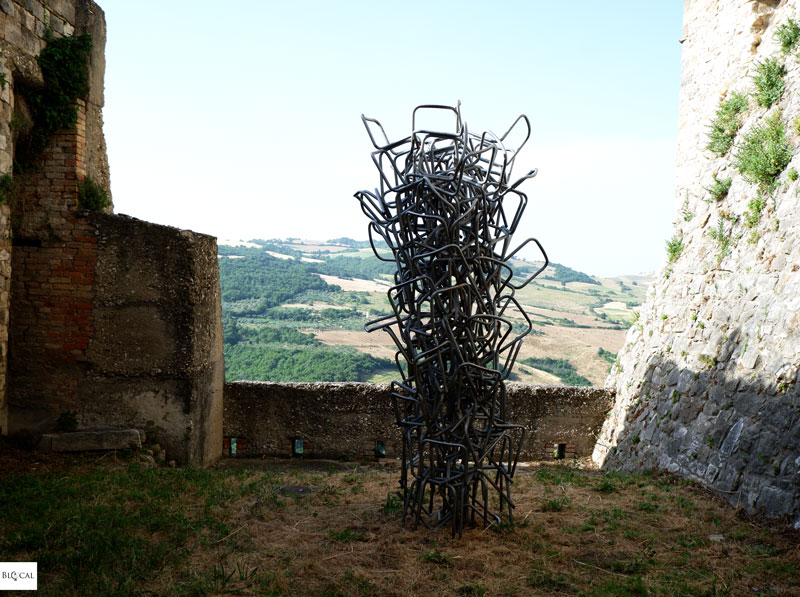
After Alice painted a series of images inspired by old photos on rusty and shattered doors in the old part of the village, visitors arrived at Civitacampomarano to take pictures of her street art.
Eventually, locals started dreaming about a second life for Civitacampomarano, a regeneration that sparkled after Alice Pasquini inaugurated CVTA’ Street Fest in 2016.
The fact that the festival’s artistic director is herself a street artist implies a curation of the event that takes into account the context of the artworks and the specificity of the village. By painting in many different cities worldwide, Alice learned that walls aren’t canvases, meaning that there is no one alike. This influenced her approach to street art and the criteria she used to choose the street artists for the festival she has been curating in her mother’s hometown.
In Civitacampomarano, murals aren’t dominating the landscape. Instead, they are integrated into the surroundings, almost emerging from the wall as if they had always been there, the artist merely bringing them to the surface.
To contextualize his mural, Portuguese street artist Addfuel incorporated traditional patterns from the tiles that he found inside Civitacampomarano’s medieval castle in his piece. He blended them with his iconic reinterpretation of Portuguese azulejos, brimming with pop art and skate culture references.
Italian artist Gola Hundun searched for context in the unspoiled village’s nature, finding inspiration for his characteristic motifs in local plants and flowers.
Most pieces are human-size and can be found on doors or other forgotten corners of the village.
Contextual street art on doors is such a thing in Civitacampomarano that I made a Reel about it. Check it out:
Street art in Civitacampomarano is non-invasive, with a color palette always blending into the surroundings. Even those artists known for using dark colors to match even darker themes, stepped into this village on tiptoes, kindly asking for permission and respecting what was already there and residents’ wishes.
Artists specialized in street installations found in the streets of Civitacampomarano the perfect place to express their vocation.
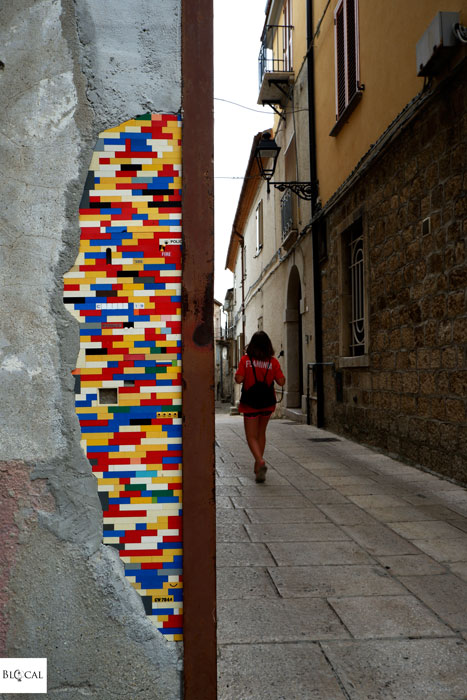
There’s no doubt that Alice Pasquini reached her goal of bringing life back to Civitacampomarano. Every summer, the village comes alive and welcomes thousands of visitors. Most importantly, this is the long-awaited moment for all grandmas, as their sons and nephews, who were forced to leave the town to find a job, are returning to enjoy the festival. I was moved by hearing all the “ciao nonna” coming from the windows on Saturday morning ;)
CVTA’ Street Fest: when street art expresses the local community.
Most of all, the CVTA Street Fest is about the community that hosts it. Civitacampomarano is a village of 300 people, all somehow involved in making the festival days unique and welcoming for more than 20,000 visitors over the weekend: a collective effort that genuinely touched me.
When I arrived, I couldn’t believe how many volunteers I could spot, busy bees animated by local pride and a sense of ownership. They all have their name written on the t-shirt, a simple detail that breaks down barriers between visitors and locals.
Artists transpose this friendly vibe and welcoming atmosphere onto the walls, often drawing inspiration from locals and their stories. Molisan artist ICKS painted Civitacampomarano’s oldest man, Zio Nicola, and oldest woman, Zia Rosaria, now both in their 90s, while Spanish artists Cristian Blanxer and Victor Repo portrayed Emma, the youngest inhabitant of Civitacampomarano, with Civitacampomarano’s picturesque alleys on her dress to signify that the young girl embraces the whole community, which she will always carry with her.
Read also: One week in Italy with Milu Correch
Other artists tributed the life of the village with metaphorical artwork in their characteristic style. The Brazilian Alex Senna painted local old ladies and the resident colony of cats with his signature monochromatic style, while MP5 referenced the village’s recent history by representing its fighting spirit and the resilience of its inhabitants on a stunning artwork that develops around a corner.
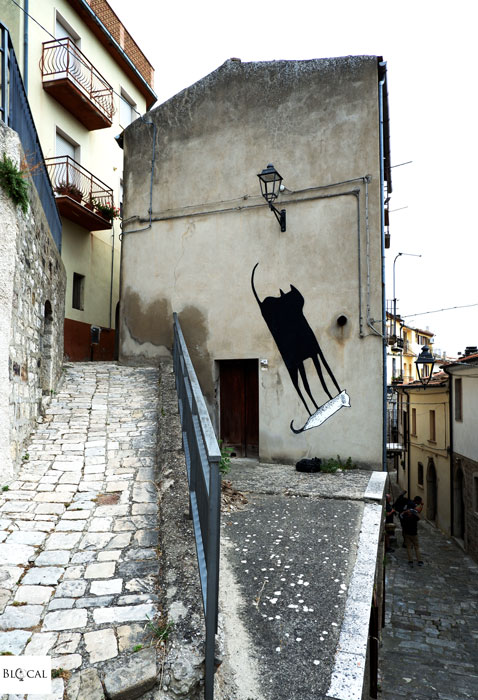
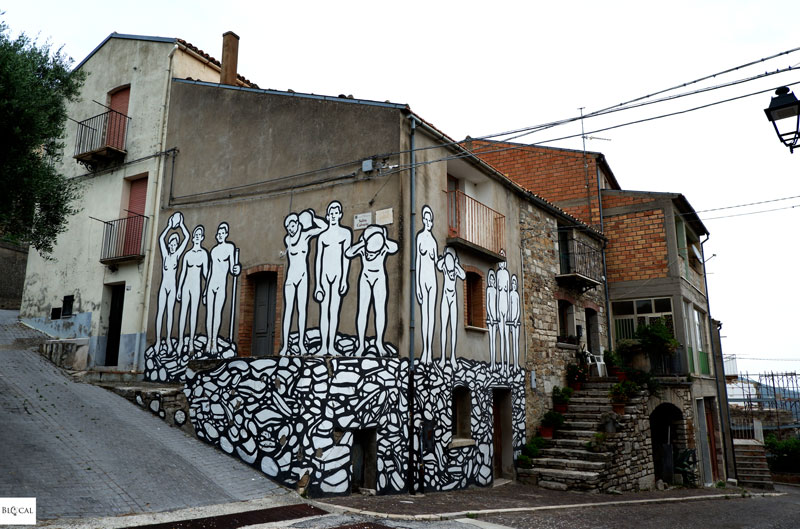
Since the street art festival kicked off the regeneration of the village, many foreigners are buying a house in Civitacampomarano, slowly repopulating the town while pursuing their dream of a simple life in Italy’s unspoiled countryside. However, this doesn’t mean that Civitacampomarano is losing its authenticity or forgetting local traditions, which – in turn – stay at the core of the festival and constitute the skeleton of every artwork; let me tell you why…
CVTA’ Street Fest: street art and ancient local traditions define Civitacampomarano’s cultural heritage.
As Alice Pasquini likes to point out, “Art is just an excuse.” The festival has always focused on keeping the local traditions alive, from the laces that Polish artist Nespoon painted on a wall in 2017 (which, unfortunately, was destroyed by the landslide) to the cooking knowledge of the local grandmothers. This theme has been explored this year by Spanish artist Cinta Vidal and by German artist Akut.
With her gravity-defying kitchen tools, Cinta Vidal painted a tribute to all grandmothers, “anonymous caregivers, tireless workers, and excellent cooks.” In the mural, she depicted a few tools used only in Civitacampomarano to make a traditional biscuit called “Ciell,” which Cinta learned to knead at the festival’s cooking workshop.
Still about the transmission of cooking knowledge through generations is the series of artworks made by Akut (from the German duo Herakut) on three walls around the village. The three images (an old lady, a child, and a close-up of their hands making pasta together) are threaded together by the Italian saying “Impara l’arte e mettila da parte” (“Learn a trade for the rainy days”), written across the three walls.
Still drawing inspiration from his interaction with the local community is South African artist Keya Tama, who represented two Italian sayings written in the local dialect. Both murals are rich in symbols, which the artist derived from his observation of village life. (we had a long chat about these murals and his story, so expect to learn much more about Keya Tama soon!)
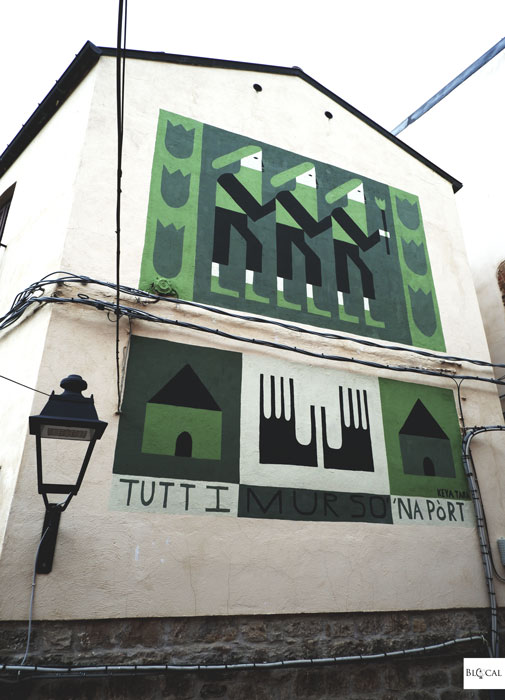
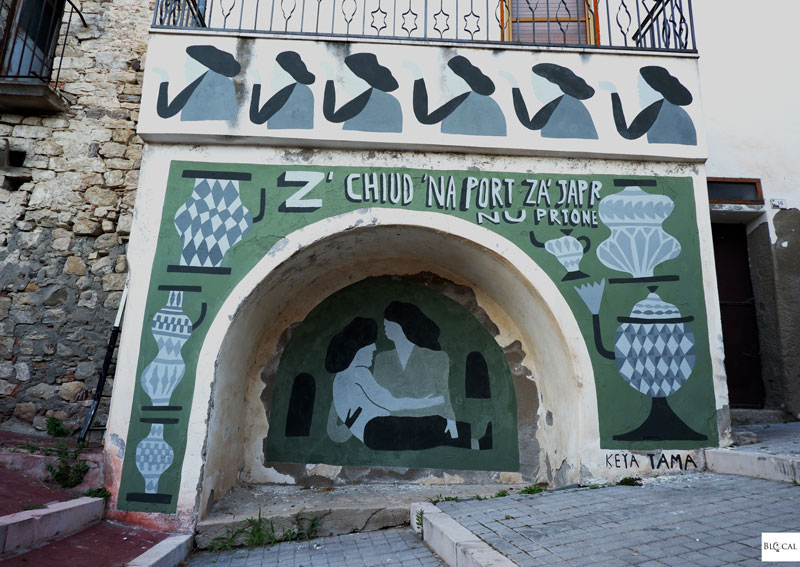
However, the focus on local traditions doesn’t imply parochialism. The inhabitants of Civitacampomarano were amazed by the dinner cooked for us by the Iranian artists Icy & Sot and the Indian artist Daku, who wanted to give us a taste of their traditions. The result was a fun night based on cultural exchange and mutual curiosity that locals will surely treasure forever.
CVTA’ Street Fest and the central role of the local community.
The connection between the artists and the local people is at the core of CVTA’ Street Fest. Such a bond was particularly evident in 2020 when the pandemic called for a special edition of the street art festival. Artists might have been unable to travel to Civitacampomarano, but they could provide instructions to locals via Zoom calls, explaining to them how to build the installations.
And so, Biancoshock designed a bus stop for the main road, Nespoon conceived a work of art made of laces carefully knitted by local women, and Alberonero created an installation made of chromatically arranged sheets hanging in the streets.
Finally, Jan Vormann invited locals to grab a spray can and write their thoughts on a designated wall – a “relief valve” installation that the artist first realized on his own house’s wall in Valdivia (Chile) during the social turmoil following lockdowns.
Ultimately, the synergy between the artists and the local community results from Alice Pasquini’s excellent artistic direction of the festival. She understood that wanting to reform a place by overturning it with the imposition of large-scale murals is never a good idea. Instead, changes should be made that align with those who stay in Civitacampomarano once the festival spotlight is gone.
Philosopher Vincenzo Cuoco, born in Civitacampomarano, once wrote, “Wanting to reform everything is the same as wanting to destroy everything,” – a powerful reminder that inspired yet another heartfelt piece in the streets of Civitacampomarano: the installation created by Indian artist Daku for this year’s CVTA Street Fest.
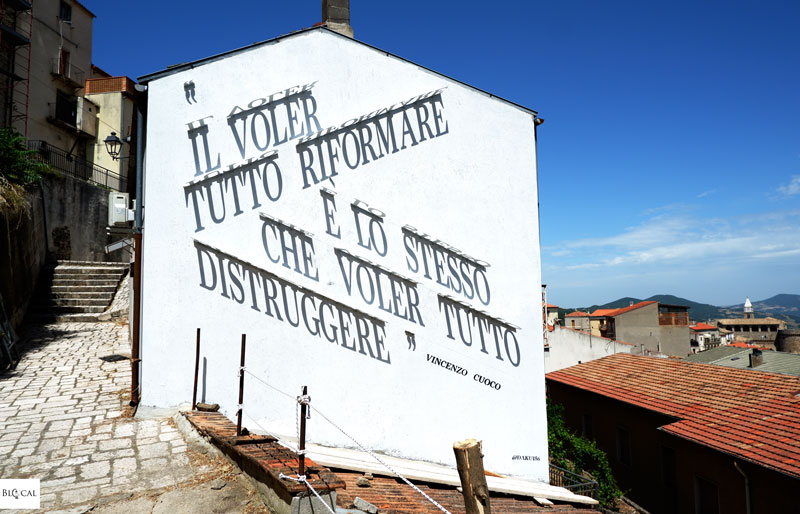
The Prologue
Fast forward one year, I’m back in Civitacampomarano as the media partner and social media manager of the 8th edition of the street art festival. Come with me behind the scenes of CVTà Street Fest 2023!
Watch my crazy vlog from CVTà Street Fest 2024!
Watch my crazy vlog from CVTà Street Fest 2025!
Civitacampomarano Street Art Map: Where to find the artworks?
Find these, and many more, murals in my google map of Civitacampomarano!
